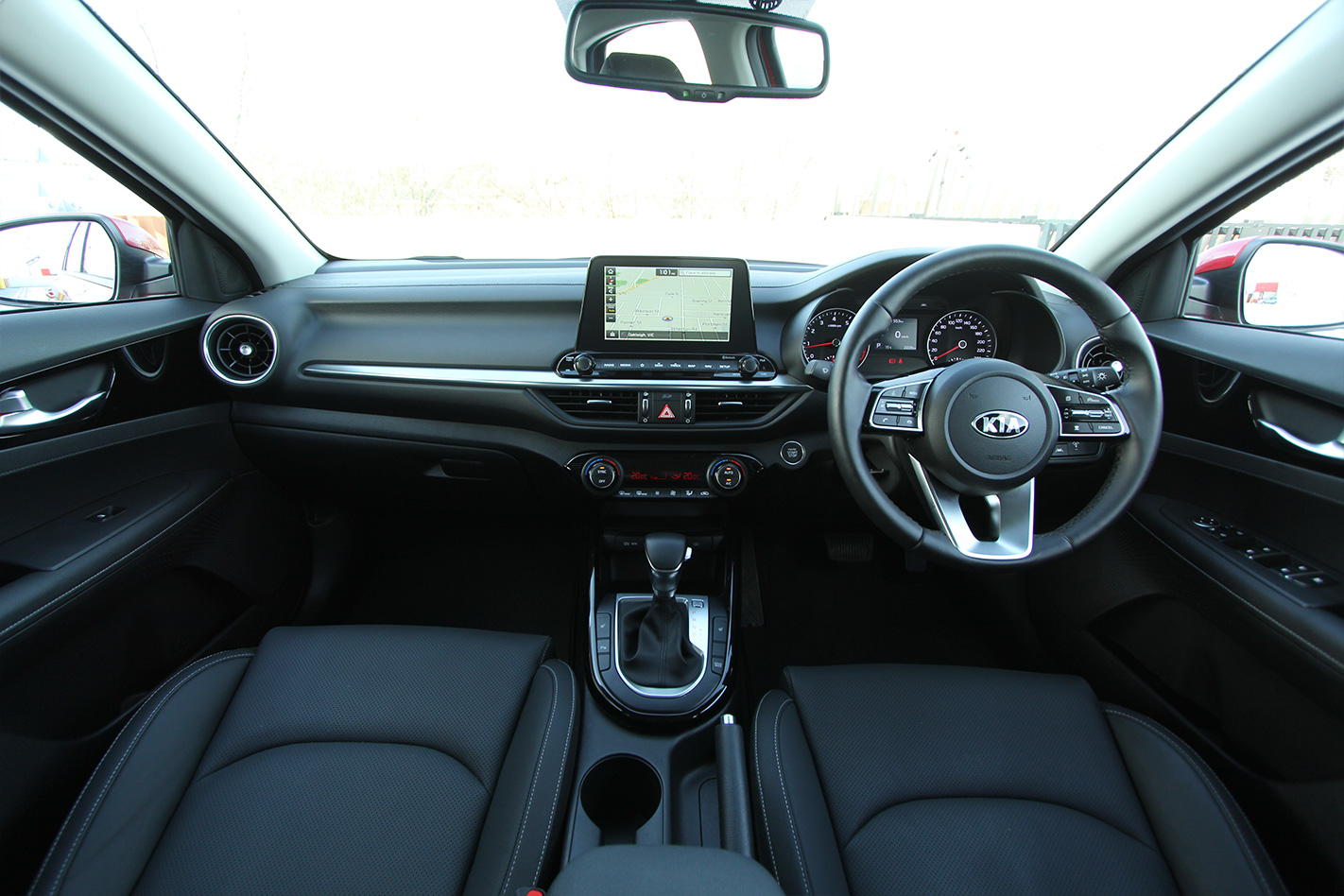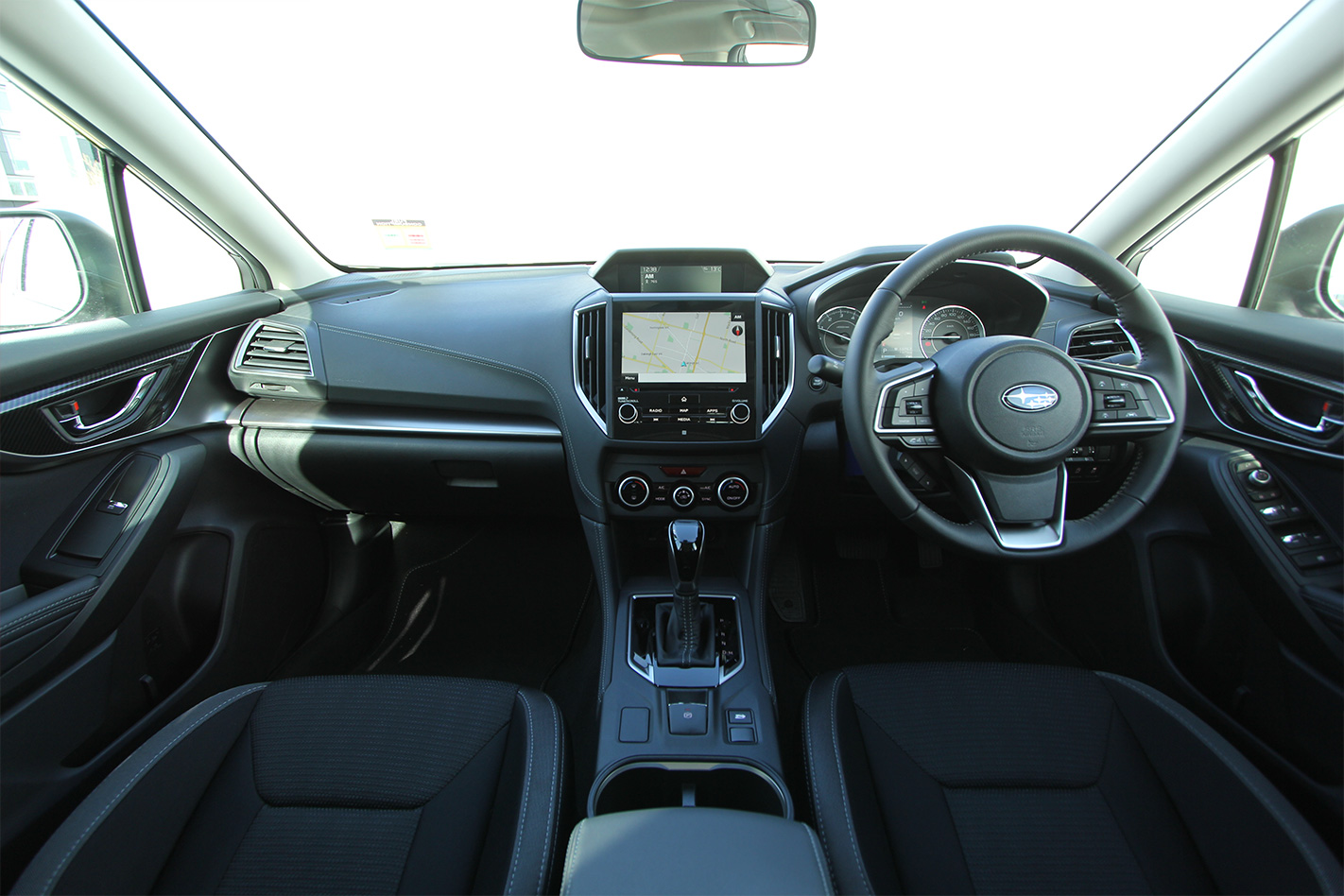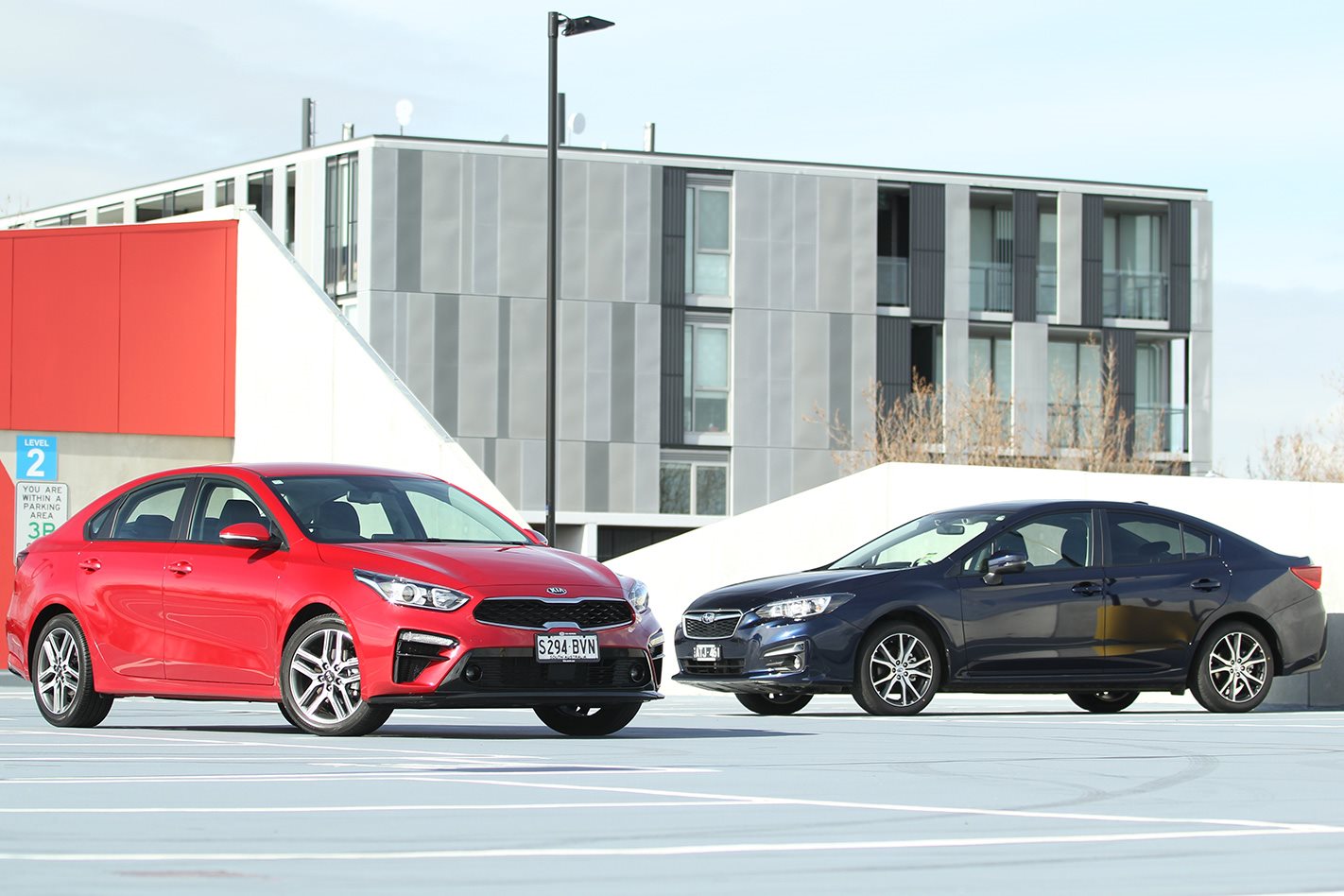Price and equipment
The arrival of the new-generation Cerato sedan this year brought tech advancement, pushing the pedestrian Korean four-door into near-premium territory with the flagship Sport+ grade. The top-shelf Cerato flaunts leather, active cruise, dual-zone climate, heated seats, keyless entry/ignition and a higher-featured AEB system.
It’s also $2600 cheaper than the previous range-topper.
Retailing for just $100 more than its Korean rival, the Impreza has the range-standard advantage of AWD to augment its Premium-spec dual-zone climate control, sat-nav, sunroof, and host of driver aids, including lane-keep assist, AEB and active cruise. The Subaru misses out on leather upholstery and dusk-sensing headlights, but otherwise its spec aligns closely with that of the Cerato Sport+.
2018 Kia Cerato Sport sedan quick review
Interior and connectivity
A generously sized 8.0-inch colour touchscreen presents clear, if simple graphics and is intuitive to operate, though some may prefer the greater internet-enabled functionality of the built-in Apple CarPlay/Android Auto smartphone mirroring. The Cerato cabin is appealing and the rear compartment is spacious, however the presence of some hard plastics dulls some of the sheen.

Also flaunting an 8.0-inch touchscreen front and centre in its dash, the Impreza augments its main display with an extra screen above, which can lead to some user confusion. Like the Cerato, CarPlay and Android Auto feature if the standard software is not for you. Rear seat space is almost limo-like, and combined with commodious front seats, it makes for an able people-carrier.

Ride and handling
Local tuning has given the Cerato an adept chassis that feels both composed and agile on sub-par roads. A stiffer body than the previous Cerato sedan provides the backbone for the dynamic capability, and the electric steering is accurate with a good sense of connection. It’s not as sporty as the badge on the bootlid may suggest, but the Cerato is sharper yet more pliant than before.
The Impreza’s handling errs toward safety and predictability, though still manages to provide decent engagement and steering finesse. The Premium grade misses out on the torque vectoring and grippier tyres of the 2.0i-S, which is a shame, but it still handles well. Ride comfort is another ace in its deck, though it’s slightly sharper than what you’ll experience in the supple Cerato.
Performance and economy
Here’s where the Cerato loses marks. A carried-over atmo 2.0-litre supplies just 112kW and 192Nm, and fuel economy is actually worse than in the previous generation. The six-speed automatic is delightfully smooth and intelligent, but the lack of any advancement in the powertrain department is a disappointment – especially as the rest of the package has taken such a substantial step up.
Subaru’s atmo 2.0-litre musters just 115kW and 196Nm, barely ahead of the Cerato, and a fun-sapping CVT is the sole gearbox available. Couple that with a 100kg-heavier kerb weight, and the Subaru is clearly the dozier car of this pair. That said, it burns nearly a litre less fuel per 100km, which is arguably the most important metric for the average small-sedan buyer.
Warranty and servicing
Seven years of unlimited-kilometre warranty coverage is hard to beat, and it’s an advantage Kia has held for some time. Servicing intervals are also generous at 15,000km or 12 months, and over three years you can expect to pay just $1055 to keep the Cerato in good running order. After-sales coverage is definitely a Kia strength, and will likely be a deal-maker for many service-conscious shoppers.
Subaru’s three-year/unlimited kilometre warranty pales in comparison with Kia’s standard-setting warranty terms, though service intervals of 12,500km/12 months at least minimise the number of visits you’ll make to the service department. Maintenance costs are capped for three years, and tally a reasonable $1298 over the first three years or 37,500km.
Verdict
As similar as they may be, the Subaru Impreza eeks out a win over Kia’s Cerato Sport – helped across the line by its commitment to interior quality and spaciousness.





